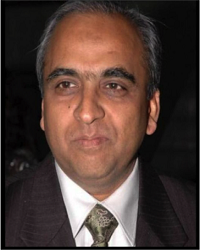Could not find what you are looking for?
- Treatments & Procedures
- Patent Ductus Arteriosus (PDA)- Types, Procedure, Cost In India, Risks, Recovery and Benefits
Patent Ductus Arteriosus (PDA)- Types, Procedure, Cost in India, Risks, Recovery and benefits
Best Hospital for Patent Ductus Arteriosus (PDA) in India
What is Patent Ductus Arteriosus (PDA)?
Patent Ductus Arteriosus (PDA) is a heart condition that occurs when the ductus arteriosus, a blood vessel that connects the pulmonary artery to the aorta, fails to close after birth. This vessel is crucial during fetal development, allowing blood to bypass the lungs, which are not yet in use. Normally, the ductus arteriosus closes shortly after birth, but in some infants, it remains open, leading to a condition known as PDA.
When the ductus arteriosus remains patent, it can cause an abnormal flow of blood between the aorta and the pulmonary artery. This can lead to increased blood flow to the lungs and heart, potentially resulting in heart failure, pulmonary hypertension, and other serious complications if left untreated. The condition is more common in premature infants but can also occur in full-term babies.
The primary purpose of the Patent Ductus Arteriosus (PDA) procedure is to close this vessel, restoring normal blood flow and preventing complications. The procedure can be performed using various techniques, including medication, catheter-based interventions, or surgical closure, depending on the size of the ductus and the overall health of the patient.
Why is Patent Ductus Arteriosus (PDA) Done?
The decision to perform a Patent Ductus Arteriosus (PDA) procedure is typically based on the symptoms exhibited by the patient and the potential risks associated with the condition. Symptoms of PDA can vary widely, especially in infants. Some common signs include:
- Rapid breathing or difficulty breathing
- Poor feeding or difficulty gaining weight
- Fatigue or lethargy
- Heart murmur, which may be detected during a routine examination
In some cases, PDA may not cause noticeable symptoms, especially in smaller openings. However, as the condition progresses, it can lead to more severe complications, such as heart failure or pulmonary hypertension.
The PDA procedure is usually recommended when the ductus arteriosus is large enough to cause significant symptoms or complications. In premature infants, the procedure may be performed shortly after birth if the PDA is causing respiratory distress or other health issues. In older children or adults, the procedure may be indicated if the PDA is causing heart enlargement or other complications.
Indications for Patent Ductus Arteriosus (PDA)
Several clinical situations and diagnostic findings can indicate the need for a Patent Ductus Arteriosus (PDA) procedure. These include:
- Symptoms of Heart Failure: If a patient exhibits signs of heart failure, such as difficulty breathing, excessive sweating, or poor feeding, it may indicate that the PDA is causing significant strain on the heart.
- Echocardiogram Findings: An echocardiogram is a key diagnostic tool used to visualize the heart's structure and function. If the echocardiogram shows a significant left-to-right shunt due to a large PDA, this may warrant intervention.
- Pulmonary Hypertension: Elevated blood pressure in the lungs can occur due to increased blood flow from the aorta to the pulmonary artery. If pulmonary hypertension is diagnosed, closing the PDA may be necessary to alleviate this condition.
- Failure to Thrive: In infants, if there is a failure to gain weight or grow as expected, it may be linked to the effects of PDA on the heart and lungs.
- Age and Size Considerations: The timing of the procedure can also depend on the age and size of the patient. In premature infants, early intervention may be critical, while in older children, the decision may be based on the severity of symptoms and overall health.
- Other Associated Congenital Heart Defects: If a patient has other congenital heart defects, closing the PDA may be part of a broader treatment plan to improve overall heart function.
In summary, the indications for a Patent Ductus Arteriosus (PDA) procedure are based on a combination of clinical symptoms, diagnostic imaging, and the overall health of the patient. Early diagnosis and intervention are crucial to prevent complications and ensure the best possible outcomes.
Types of Patent Ductus Arteriosus (PDA)
While there are no distinct subtypes of Patent Ductus Arteriosus (PDA), the procedure to close the ductus can be approached in different ways, depending on the patient's specific condition and the size of the ductus. The main techniques include:
- Medication: In some cases, especially in premature infants, medications such as nonsteroidal anti-inflammatory drugs (NSAIDs) may be used to encourage the closure of the ductus arteriosus. This approach is often considered before more invasive procedures.
- Catheter-Based Closure: This minimally invasive technique involves threading a catheter through the blood vessels to the heart. A device is then deployed to close the ductus arteriosus. This method is often preferred for its shorter recovery time and reduced risk of complications.
- Surgical Closure: In cases where catheter-based closure is not feasible or if the PDA is particularly large, surgical intervention may be necessary. This involves a more invasive procedure where the ductus arteriosus is directly accessed and closed through an incision in the chest.
Each of these approaches has its own indications, benefits, and risks, and the choice of procedure will depend on the individual patient's circumstances. The goal of any intervention is to effectively close the ductus arteriosus, restore normal blood flow, and prevent future complications.
In conclusion, understanding Patent Ductus Arteriosus (PDA) is essential for recognizing its potential impact on health. The procedure to close PDA is a critical intervention that can significantly improve outcomes for affected individuals. Early diagnosis and appropriate management are key to ensuring a healthy future for those with this condition.
Contraindications for Patent Ductus Arteriosus (PDA)
While many patients can benefit from treatment for Patent Ductus Arteriosus (PDA), certain conditions or factors may make a patient unsuitable for the procedure. Understanding these contraindications is crucial for ensuring patient safety and optimal outcomes.
- Severe Pulmonary Hypertension: Patients with significantly elevated blood pressure in the lungs may not be ideal candidates for PDA closure. The increased pressure can complicate the procedure and lead to further complications.
- Coexisting Cardiac Anomalies: If a patient has other significant heart defects, such as complex congenital heart disease, the risks associated with PDA closure may outweigh the benefits. In such cases, a comprehensive evaluation by a cardiologist is essential.
- Infection: Active infections, particularly in the heart (endocarditis) or other systemic infections, can pose serious risks during the procedure. It is crucial to treat any infections before considering PDA closure.
- Severe Prematurity: In premature infants, the risks associated with anesthesia and the procedure itself may be too high. Each case should be evaluated individually, considering the infant's overall health and development.
- Allergic Reactions: Patients with known allergies to the materials used in the closure device or to anesthesia may not be suitable candidates. Alternative treatment options should be discussed in such cases.
- Uncontrolled Medical Conditions: Patients with uncontrolled diabetes, hypertension, or other chronic conditions may face increased risks during the procedure. Stabilizing these conditions is essential before proceeding.
- Poor Overall Health: Patients with significant comorbidities or those who are not in good overall health may not tolerate the procedure well. A thorough assessment by a healthcare provider is necessary to determine suitability.
- Inability to Follow Post-Procedure Care: Patients who may struggle to adhere to post-procedure care instructions, such as medication regimens or follow-up appointments, may not be ideal candidates for PDA closure.
How to Prepare for Patent Ductus Arteriosus (PDA)
Preparation for a Patent Ductus Arteriosus (PDA) procedure is essential to ensure a smooth process and optimal outcomes. Here are the key steps to follow:
- Consultation with a Cardiologist: Before the procedure, a thorough evaluation by a pediatric cardiologist or a cardiologist specializing in congenital heart defects is necessary. This consultation will include a review of medical history, physical examination, and diagnostic tests.
- Diagnostic Tests: Patients may undergo several tests to assess heart function and the size of the PDA. Common tests include:
- Echocardiogram: This ultrasound test provides images of the heart's structure and function.
- Chest X-ray: This imaging test helps visualize the heart and lungs.
- Electrocardiogram (ECG): This test measures the electrical activity of the heart.
- Pre-Procedure Instructions: Patients will receive specific instructions to follow before the procedure, which may include:
- Fasting: Patients may be instructed to avoid food and drink for a certain period before the procedure, typically 6-8 hours.
- Medication Adjustments: Some medications may need to be paused or adjusted. It’s important to discuss all current medications with the healthcare provider.
- Allergy Information: Inform the healthcare team about any allergies, especially to medications or anesthesia.
- Transportation Arrangements: Since the procedure may involve sedation or anesthesia, patients should arrange for someone to drive them home afterward. It’s important not to drive or operate heavy machinery for at least 24 hours post-procedure.
- Emotional Preparation: Preparing emotionally for the procedure is also important. Patients and families should feel free to ask questions and express any concerns. Understanding the procedure can help alleviate anxiety.
- Post-Procedure Care Plan: Discuss the post-procedure care plan with the healthcare team. This includes information on medications, activity restrictions, and follow-up appointments.
Patent Ductus Arteriosus (PDA): Step-by-Step Procedure
Understanding the step-by-step process of the Patent Ductus Arteriosus (PDA) procedure can help ease any concerns. Here’s what to expect before, during, and after the procedure:
Before the Procedure:
- Arrival: Patients will arrive at the hospital or outpatient center and check in. They will be taken to a pre-procedure area where they will change into a hospital gown.
- IV Placement: A healthcare provider will insert an intravenous (IV) line into a vein, usually in the arm, to administer medications and fluids.
- Monitoring: Vital signs, including heart rate and blood pressure, will be monitored closely.
During the Procedure:
- Anesthesia: Patients will receive sedation or general anesthesia, depending on the specific case and the age of the patient. This ensures comfort throughout the procedure.
- Accessing the Heart: The cardiologist will make a small incision, usually in the groin area, to access a blood vessel. A catheter (a thin, flexible tube) is then guided through the blood vessel to the heart.
- Closure Device Placement: Once the catheter reaches the PDA, the cardiologist will position a closure device to seal the ductus arteriosus. This device is typically made of a biocompatible material that encourages tissue growth, effectively closing the PDA.
- Confirmation: After placing the device, the cardiologist will use imaging techniques, such as echocardiography or fluoroscopy, to confirm that the PDA is successfully closed.
After the Procedure:
- Recovery: Patients will be moved to a recovery area where they will be monitored as the anesthesia wears off. Vital signs will continue to be checked.
- Observation: Patients may stay in the recovery area for a few hours or longer, depending on their condition and the healthcare provider's recommendations.
- Discharge Instructions: Once stable, patients will receive discharge instructions, including information on activity restrictions, medications, and signs of potential complications to watch for.
Follow-Up Care:
A follow-up appointment will be scheduled to monitor the patient’s recovery and ensure the closure device is functioning properly. This is an important step in the overall care process.
Risks and Complications of Patent Ductus Arteriosus (PDA)
Like any medical procedure, the closure of a Patent Ductus Arteriosus (PDA) carries certain risks and potential complications. Understanding these can help patients and families make informed decisions.
Common Risks:
- Bleeding: Minor bleeding at the catheter insertion site is common but usually resolves quickly. In rare cases, significant bleeding may occur.
- Infection: There is a risk of infection at the insertion site or within the heart. Antibiotics may be given to reduce this risk.
- Allergic Reactions: Some patients may experience allergic reactions to medications or materials used during the procedure, though this is rare.
Rare Risks:
- Damage to Blood Vessels: The catheter may cause injury to blood vessels, which can lead to complications requiring further intervention.
- Arrhythmias: Some patients may experience irregular heartbeats during or after the procedure. Most arrhythmias are temporary and resolve on their own.
- Device Migration: In rare cases, the closure device may move from its intended position, which may require additional procedures to correct.
- Pulmonary Complications: Patients with pre-existing lung conditions may experience worsening symptoms post-procedure.
Long-Term Considerations:
- While most patients recover well, some may require long-term follow-up to monitor heart function and ensure the closure device remains effective. Regular check-ups with a cardiologist are essential for ongoing care.
In conclusion, understanding the contraindications, preparation steps, procedure details, and potential risks associated with Patent Ductus Arteriosus (PDA) closure can empower patients and families to make informed decisions about their care. Always consult with a healthcare provider for personalized advice and guidance tailored to individual health needs.
Recovery After Patent Ductus Arteriosus (PDA)
Recovering from a Patent Ductus Arteriosus (PDA) procedure is a crucial phase that can significantly impact the overall outcome and quality of life. The recovery timeline can vary depending on the individual’s age, health status, and the specific method used for the procedure, whether it be catheter-based closure or surgical ligation.
Expected Recovery Timeline
- Immediate Post-Procedure (0-24 hours): After the procedure, patients are typically monitored in a recovery area for several hours. Vital signs will be closely observed, and any immediate complications will be addressed. Most patients can expect to stay in the hospital for 1 to 3 days.
- First Week: During the first week post-procedure, patients may experience mild discomfort, fatigue, or a sore throat (if intubation was necessary). It’s essential to rest and gradually increase activity levels. Follow-up appointments will usually be scheduled within this timeframe to monitor recovery.
- 2-4 Weeks: By the second week, many patients start to feel significantly better. Light activities can be resumed, but strenuous exercise or heavy lifting should be avoided. Most children can return to school within 1 to 2 weeks, while adults may take a bit longer depending on their job requirements.
- 1-3 Months: Full recovery can take anywhere from 1 to 3 months. Patients are encouraged to engage in regular, light physical activity as tolerated. Follow-up echocardiograms may be performed to ensure the ductus arteriosus remains closed and to monitor heart function.
Aftercare Tips
- Medication: Follow the prescribed medication regimen, which may include pain relievers and antibiotics to prevent infection.
- Wound Care: Keep the incision site clean and dry. Watch for signs of infection, such as increased redness, swelling, or discharge.
- Diet: A balanced diet rich in fruits, vegetables, lean proteins, and whole grains can aid recovery. Stay hydrated and avoid excessive salt intake.
- Activity Restrictions: Avoid high-impact activities, swimming, or sports until cleared by your healthcare provider. Gentle walks are encouraged to promote circulation.
- Follow-Up Appointments: Attend all scheduled follow-ups to monitor heart health and recovery progress.
When Normal Activities Can Resume
Most patients can return to their normal daily activities within a few weeks, but it’s essential to listen to your body and consult with your healthcare provider. Strenuous activities, such as heavy lifting or competitive sports, may need to be postponed for a few months. Always follow your doctor’s advice regarding the resumption of specific activities.
Benefits of Patent Ductus Arteriosus (PDA)
The benefits of undergoing a PDA closure procedure are significant and can lead to substantial health improvements and enhanced quality of life. Here are some key benefits:
- Improved Heart Function: Closing the PDA helps restore normal blood flow, reducing the workload on the heart. This can lead to improved heart function and reduced risk of heart failure.
- Reduced Symptoms: Many patients experience a decrease in symptoms such as shortness of breath, fatigue, and frequent respiratory infections. This improvement can lead to a more active lifestyle.
- Enhanced Growth and Development in Children: For pediatric patients, closing a PDA can lead to better growth and development. Children often gain weight more effectively and have improved energy levels.
- Lower Risk of Complications: Closing the PDA reduces the risk of complications such as pulmonary hypertension, endocarditis (heart infection), and other cardiovascular issues.
- Increased Quality of Life: Patients often report a significant improvement in their overall quality of life post-procedure. They can engage in activities they previously found challenging or impossible.
PDA Management: Comparison of Approaches
The decision to treat a Patent Ductus Arteriosus (PDA) and the method chosen depend on various factors, including the patient's age, the size of the PDA, and whether it's causing symptoms or complications. Beyond the definitive closure procedures (catheter-based or surgical), other management strategies are often considered, particularly for specific patient groups.
Here's a comparison of common approaches to managing PDA:
|
Feature |
Catheter-Based PDA Closure |
Surgical PDA Ligation/Division |
Medical Management (e.g., NSAIDs) |
Watchful Waiting (Expectant Management) |
|---|---|---|---|---|
|
Incision Size |
Small (pinhole in groin for catheter insertion) |
Moderate (small incision in chest/side) |
No incision |
No incision |
|
Recovery Time |
Short (hours to 1-2 days) |
Moderate (few days to 2-4 weeks for full activity) |
N/A (drug course, monitoring for side effects) |
N/A (ongoing monitoring, no physical recovery) |
|
Hospital Stay |
Often outpatient or 1 day |
Typically 1-3 days |
Often in NICU for premature infants, outpatient for others |
No specific hospital stay (unless for diagnosis/monitoring) |
|
Pain Level |
Minimal (at insertion site), managed with mild analgesics |
Moderate postoperative pain (managed with medication) |
Minimal (potential GI side effects from meds) |
No pain from the management strategy itself |
|
Risk of Complications |
Minor bleeding, infection, device migration (rare), vessel injury (rare) |
Bleeding, infection, nerve injury, pneumothorax (rare) |
Kidney dysfunction, gut perforation, bleeding (primarily in premature infants) |
Potential for PDA-related complications if it doesn't close (e.g., heart failure, pulmonary hypertension, endocarditis) |
|
Visibility for Clinician |
Imaging-guided (fluoroscopy, echocardiography) |
Direct view |
Clinical observation, imaging (echocardiography) |
Clinical observation, imaging (echocardiography) |
|
Primary Use Case |
Older infants, children, adults with significant PDA |
Very large PDAs, anatomical challenges, or when other methods fail; common in premature infants where catheter is not feasible |
Primarily symptomatic premature infants |
Asymptomatic small PDAs, especially in premature infants or term infants in early days/weeks of life |
|
Effectiveness (Closure) |
Very high success rate |
Very high success rate |
Variable; more effective in premature infants, less so in term infants/adults |
Variable; high chance of spontaneous closure in small PDAs (especially premature) |
|
Cost |
Moderate to high |
Moderate to high |
Low (cost of medication and monitoring) |
Lowest (cost of diagnostic tests only) |
Cost of Patent Ductus Arteriosus (PDA) in India
The cost of a Patent Ductus Arteriosus (PDA) procedure in India typically ranges from ₹1,00,000 to ₹3,00,000. This cost can vary based on the hospital, the complexity of the case, and the specific treatment approach. For an exact estimate, contact us today. Patent ductus arteriosus surgery in Apollo Hospitals India offers significant cost savings compared to Western countries, with immediate appointments and better recovery times.
Explore affordable surgery options in India with this essential guide for patients and caregivers.
FAQs About Patent Ductus Arteriosus (PDA)
What should I eat after the PDA procedure?
After the PDA procedure, focus on a balanced diet rich in fruits, vegetables, lean proteins, and whole grains. Staying hydrated is essential. Avoid processed foods high in salt and sugar, as they can hinder recovery.
Can I take my regular medications after the procedure?
You should consult your healthcare provider about your regular medications. Some medications may need to be adjusted or temporarily stopped after the procedure, especially blood thinners or medications affecting heart function.
How long will I be in the hospital after the procedure?
Most patients stay in the hospital for 1 to 3 days post-procedure. Your healthcare team will monitor your recovery and discharge you when it’s safe to go home.
When can my child return to school after the PDA procedure?
Children can typically return to school within 1 to 2 weeks after the procedure, depending on their recovery progress. Ensure they avoid strenuous activities during this time.
Are there any signs of complications I should watch for?
Yes, watch for signs of infection at the incision site, such as increased redness, swelling, or discharge. Also, monitor for persistent fever, shortness of breath, or chest pain, and contact your doctor if these occur.
Can I exercise after the PDA procedure?
Light activities can usually be resumed within a few weeks, but avoid strenuous exercise or heavy lifting until cleared by your healthcare provider. Gentle walks are encouraged to promote recovery.
What follow-up care is needed after the procedure?
Follow-up appointments are essential to monitor heart health and ensure the PDA remains closed. Your doctor may recommend echocardiograms to assess heart function.
Is there a risk of the PDA reopening after closure?
While rare, there is a small risk of the PDA reopening after closure. Regular follow-up care will help monitor for this possibility and address any concerns.
Can adults undergo PDA closure?
Yes, adults can undergo PDA closure. The procedure is effective for patients of all ages, and many adults experience significant health improvements post-procedure.
What lifestyle changes should I consider after the procedure?
After the procedure, consider adopting a heart-healthy lifestyle, including regular exercise, a balanced diet, and avoiding smoking. These changes can enhance your overall health and well-being.
How long does the procedure take?
The duration of the PDA closure procedure can vary but typically lasts between 1 to 3 hours, depending on the method used and the complexity of the case.
Will I need to stay overnight in the hospital?
Yes, most patients will need to stay overnight for monitoring after the procedure. Your healthcare team will ensure you are stable before discharge.
Can I travel after the PDA procedure?
It’s best to avoid travel for at least a few weeks after the procedure. Consult your healthcare provider for personalized advice based on your recovery progress.
What if I have other health conditions?
If you have other health conditions, discuss them with your healthcare provider before the procedure. They will tailor the treatment plan to ensure your safety and well-being.
Are there any dietary restrictions before the procedure?
Your doctor may recommend avoiding certain foods or drinks before the procedure, especially if anesthesia is involved. Follow their instructions closely for the best outcome.
How can I manage pain after the procedure?
Pain management typically involves prescribed medications. Over-the-counter pain relievers may also be recommended. Always follow your doctor’s guidance on pain management.
What is the success rate of the PDA closure procedure?
The success rate for PDA closure is very high, with most patients experiencing significant improvements in heart function and quality of life.
Will I need to take antibiotics after the procedure?
Your doctor may prescribe antibiotics to prevent infection, especially if you have a history of heart conditions. Follow their instructions regarding antibiotic use.
Can I breastfeed after the procedure?
Yes, breastfeeding is generally safe after the procedure. However, consult your healthcare provider for personalized advice based on your recovery.
What should I do if I experience unusual symptoms after the procedure?
If you experience unusual symptoms such as severe pain, difficulty breathing, or signs of infection, contact your healthcare provider immediately for evaluation.
Conclusion
The Patent Ductus Arteriosus (PDA) procedure is a vital intervention that can significantly improve heart function and overall quality of life for patients. Whether for children or adults, the benefits of closing a PDA far outweigh the risks. If you or a loved one is facing this condition, it’s essential to speak with a medical professional to understand the best treatment options available. Your health and well-being are paramount, and timely intervention can lead to a healthier future.












